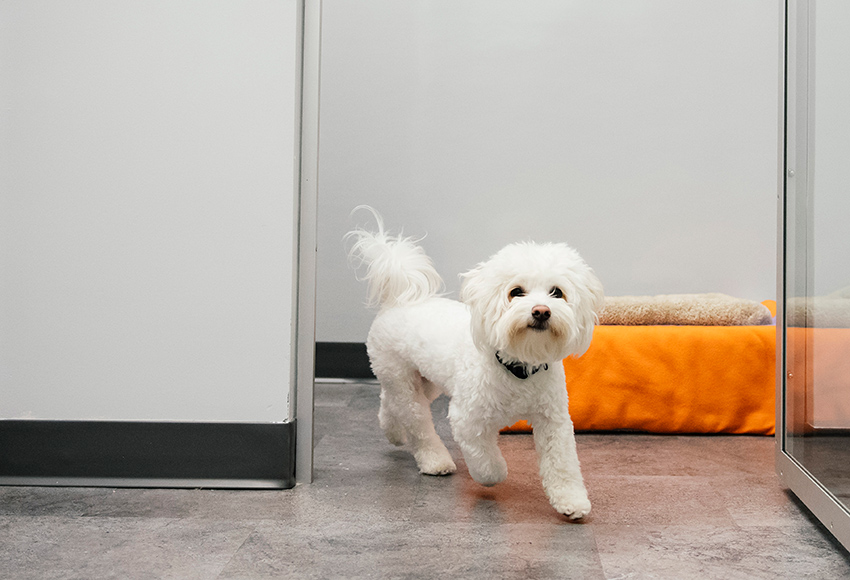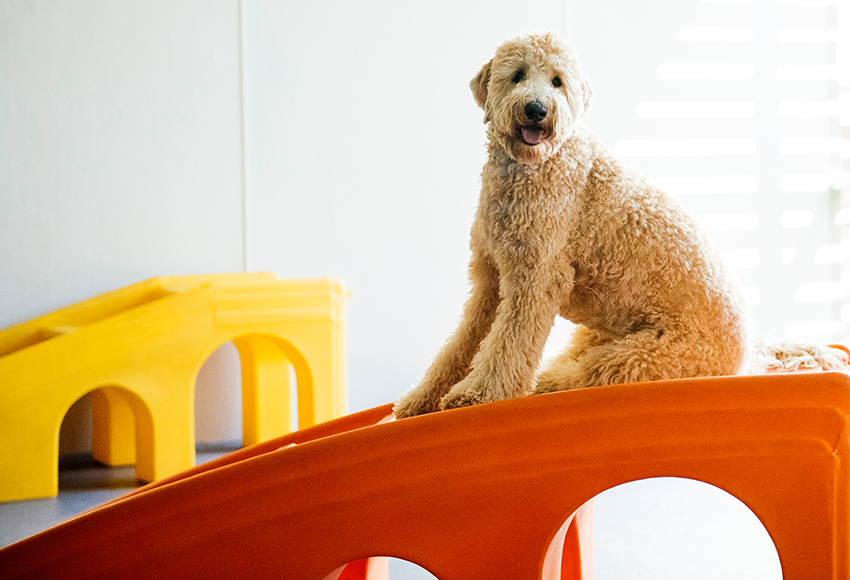Crate training 101
May 2, 2016

Crate training can help you and your dog go a long way, but it doesn’t have to be a negative experience for either of you. At Dogtopia, we practice crate training with the dogs to ensure that your dog is calm and safe in our daycare environments.
- Small puppy steps! It’s important to take a step at a time when crate training your dog, whether it’s still a puppy when you adopt it, or an older dog that you’ve taken in. It’s a new environment for your dog, and putting them in for a long period of time on the first try can be slightly traumatizing for them. Gradually extend their time in the crate as the days go on.
- Have your pup recognize that it’s their safe zone. The crate shouldn’t ever be used for punishment. This is also their bedroom to stay in and should give them a sense of peace while acting as the place to calm down, rather than being afraid or too stubborn to go into their crate.
- Use the crate for meal times. When introducing your dog to the crate, it’s best to give them something positive to associate their crate with aside from just sleeping there. Using meal times can help them adjust to the time in the crate and be able to stay in the crate for longer periods of time. Don’t forget to close the crate once they’re inside, to start eating their meal, then let them out as soon as they’re done.
- Be patient and rewarding! Be patient with your dog. It might take a lot of time to get them used to the crate, but it’ll get them accustomed to the crate bit by bit. Whenever they go into the crate or finish their food then get let out, reward them but keep the rewarding short and simple. You don’t want your dog to be spoiled while trying to train them!
Constantly reinforcing your dog’s crate training can do wonders!







